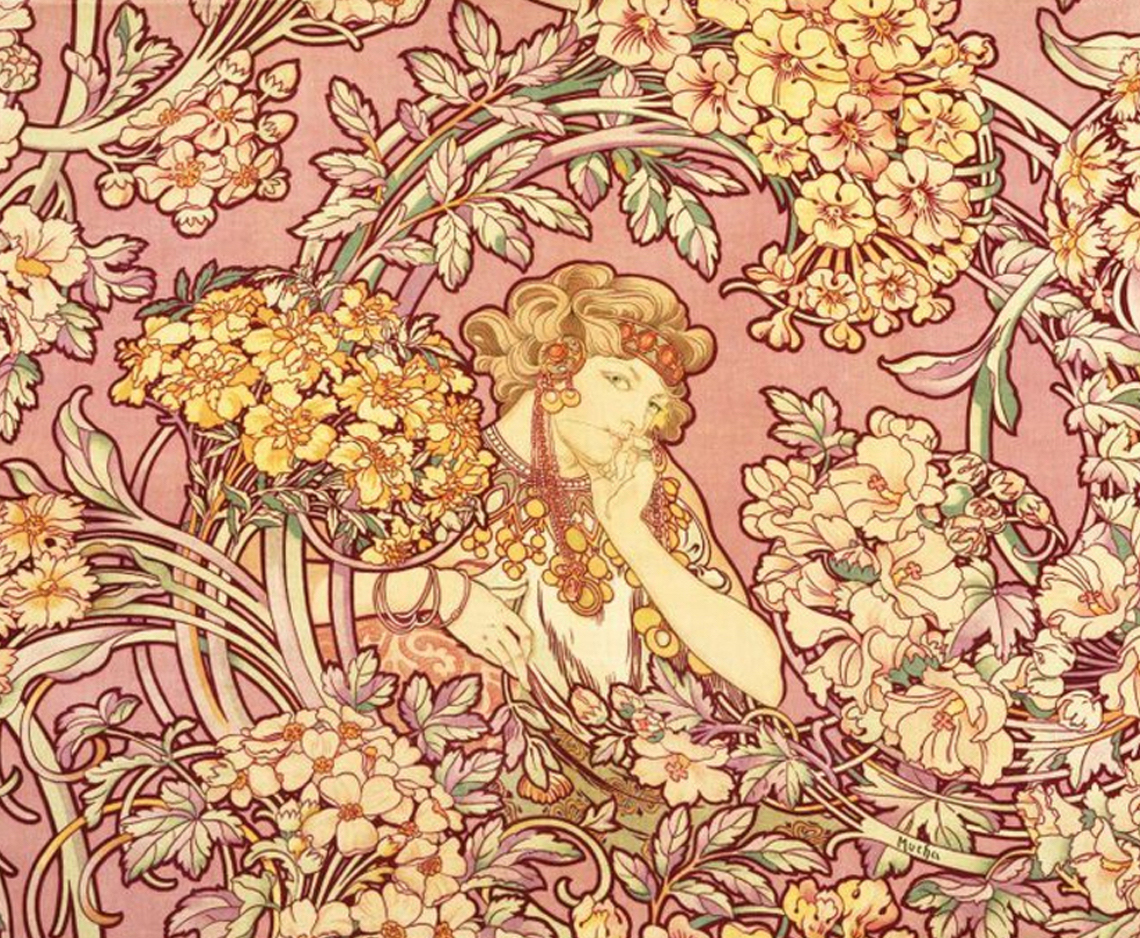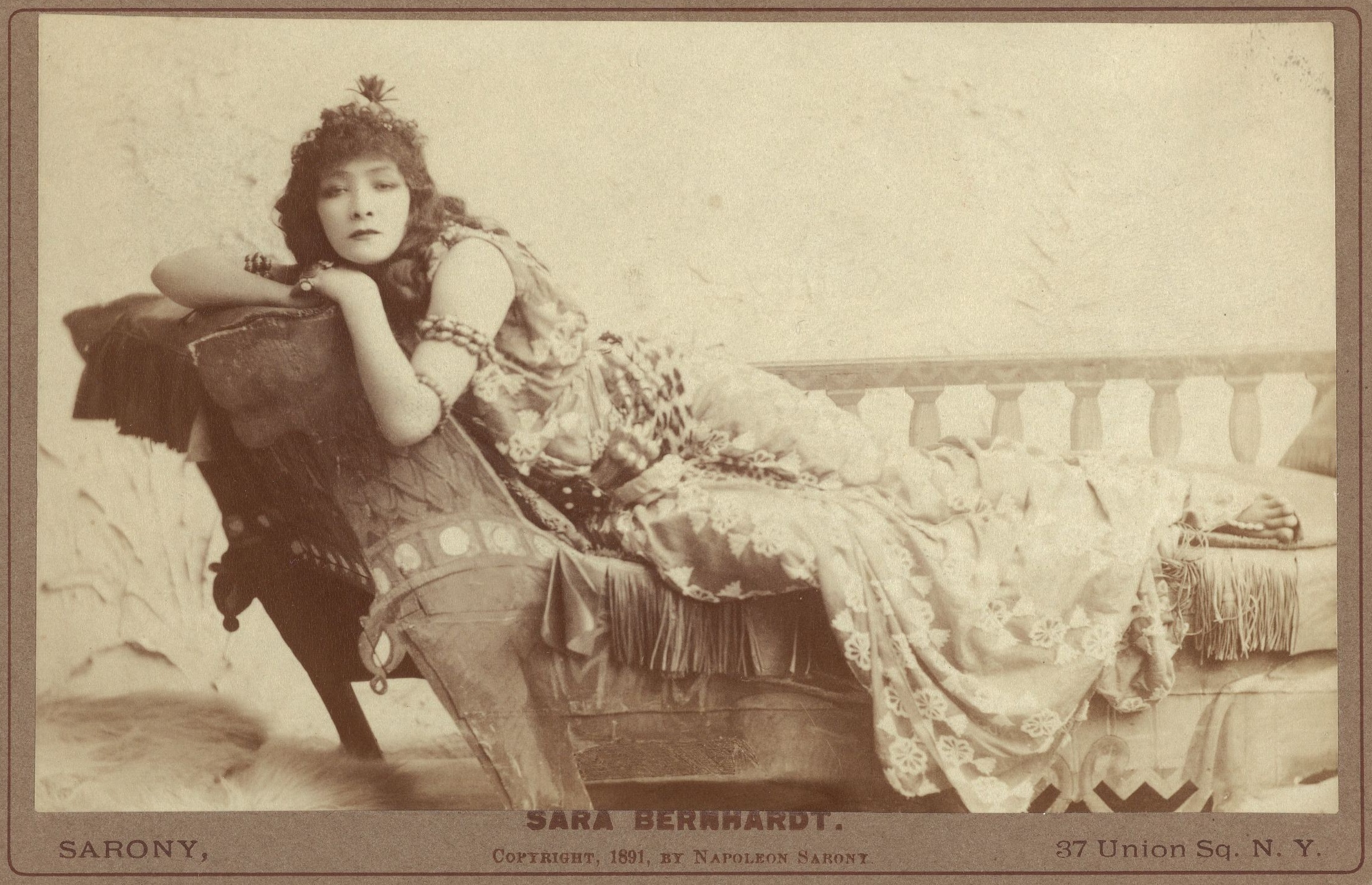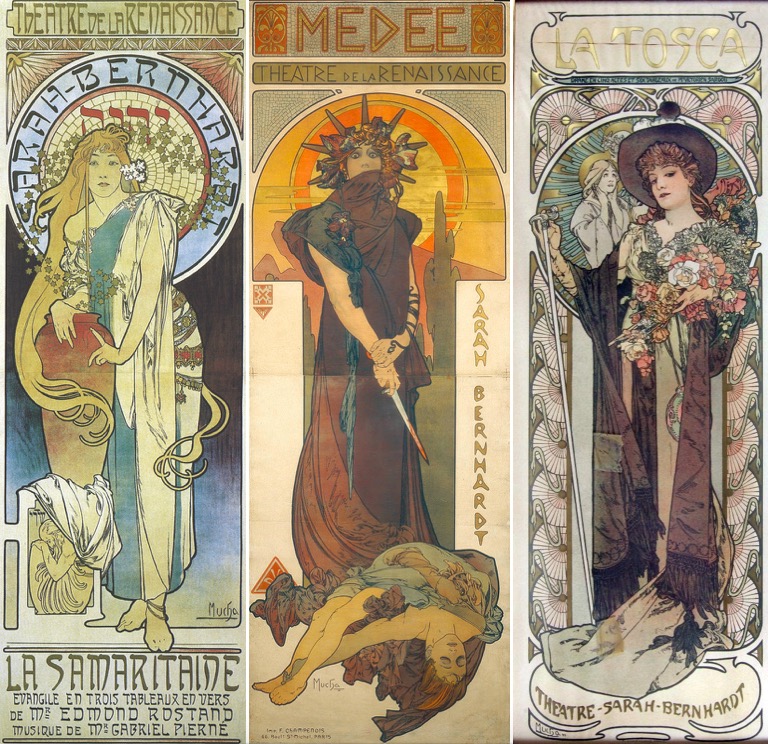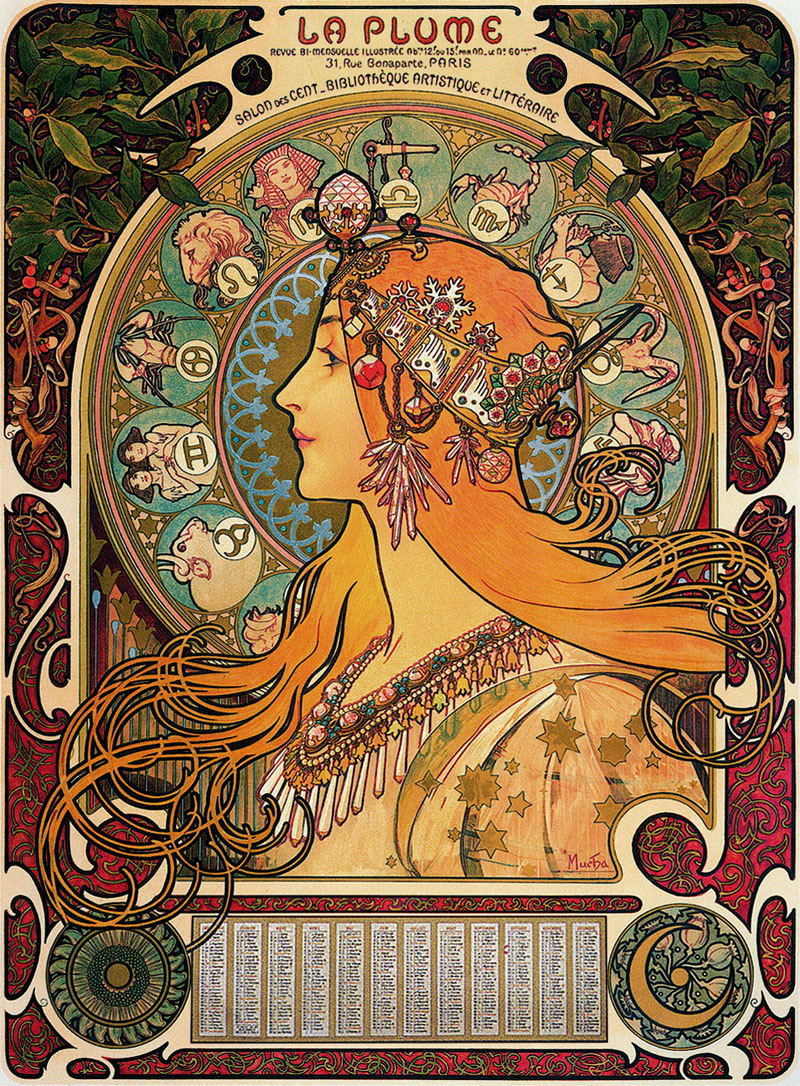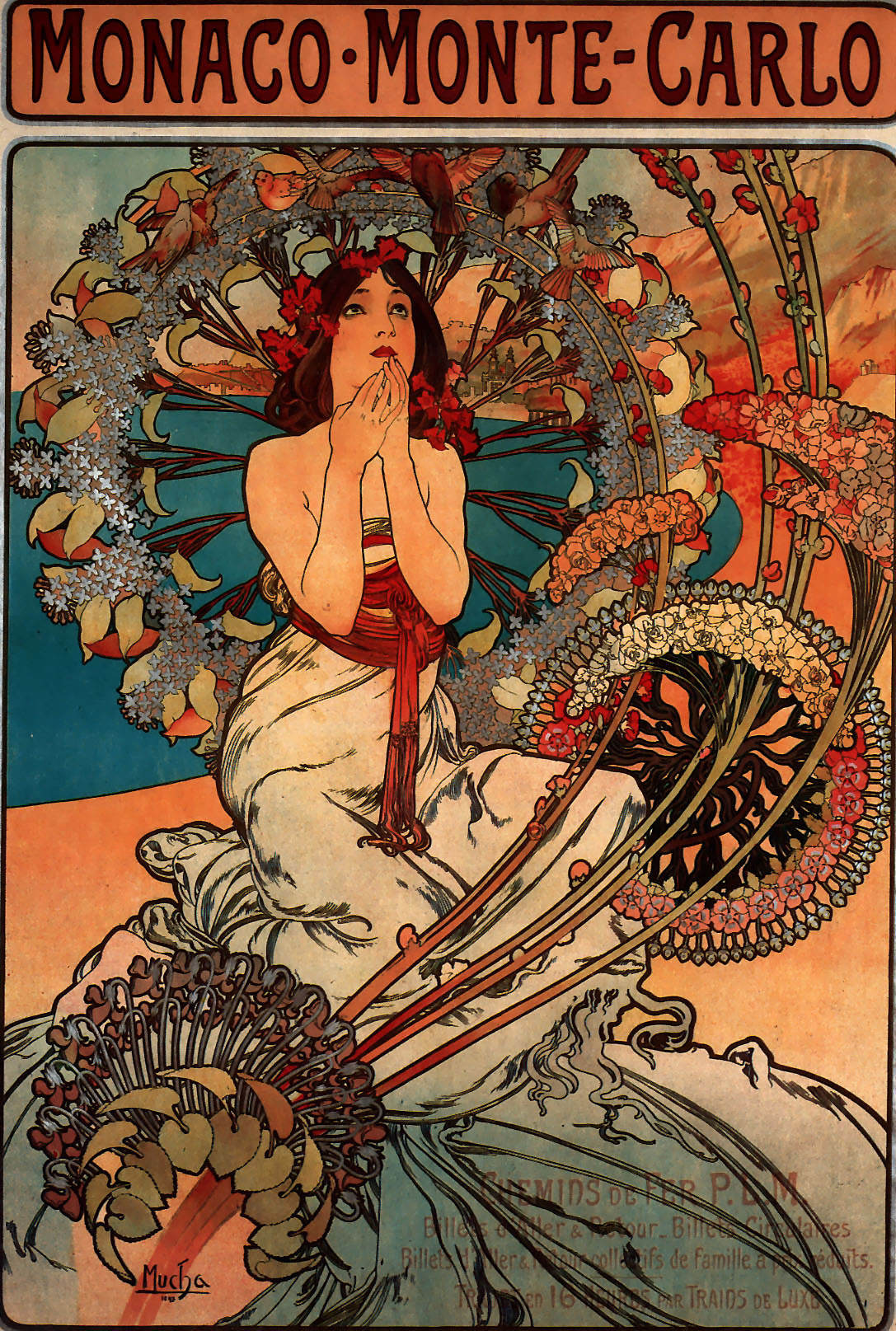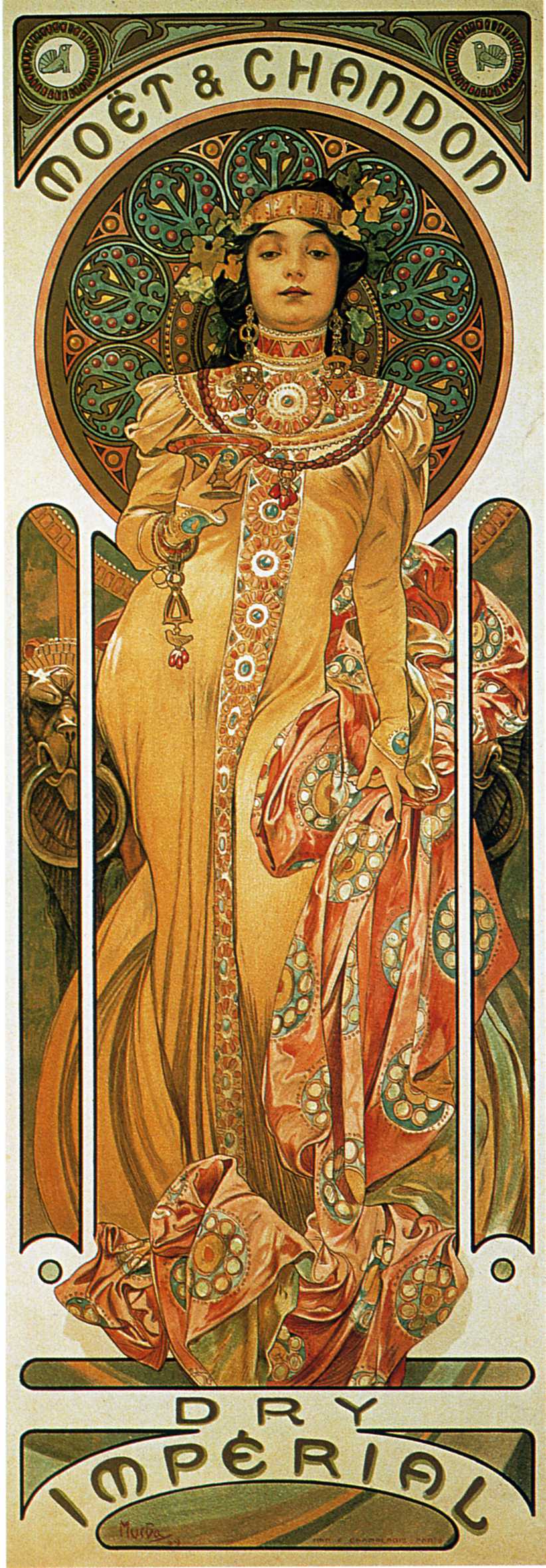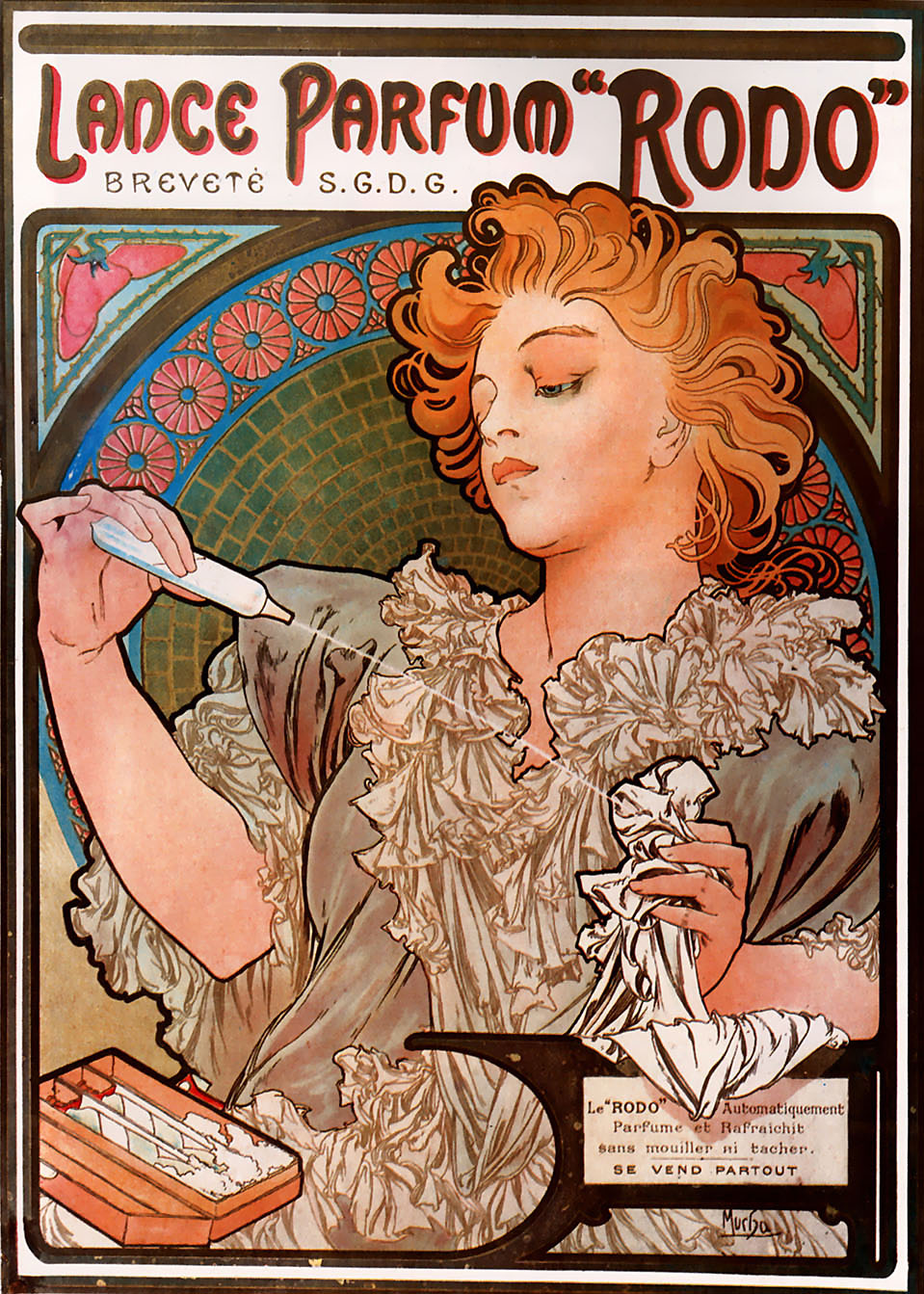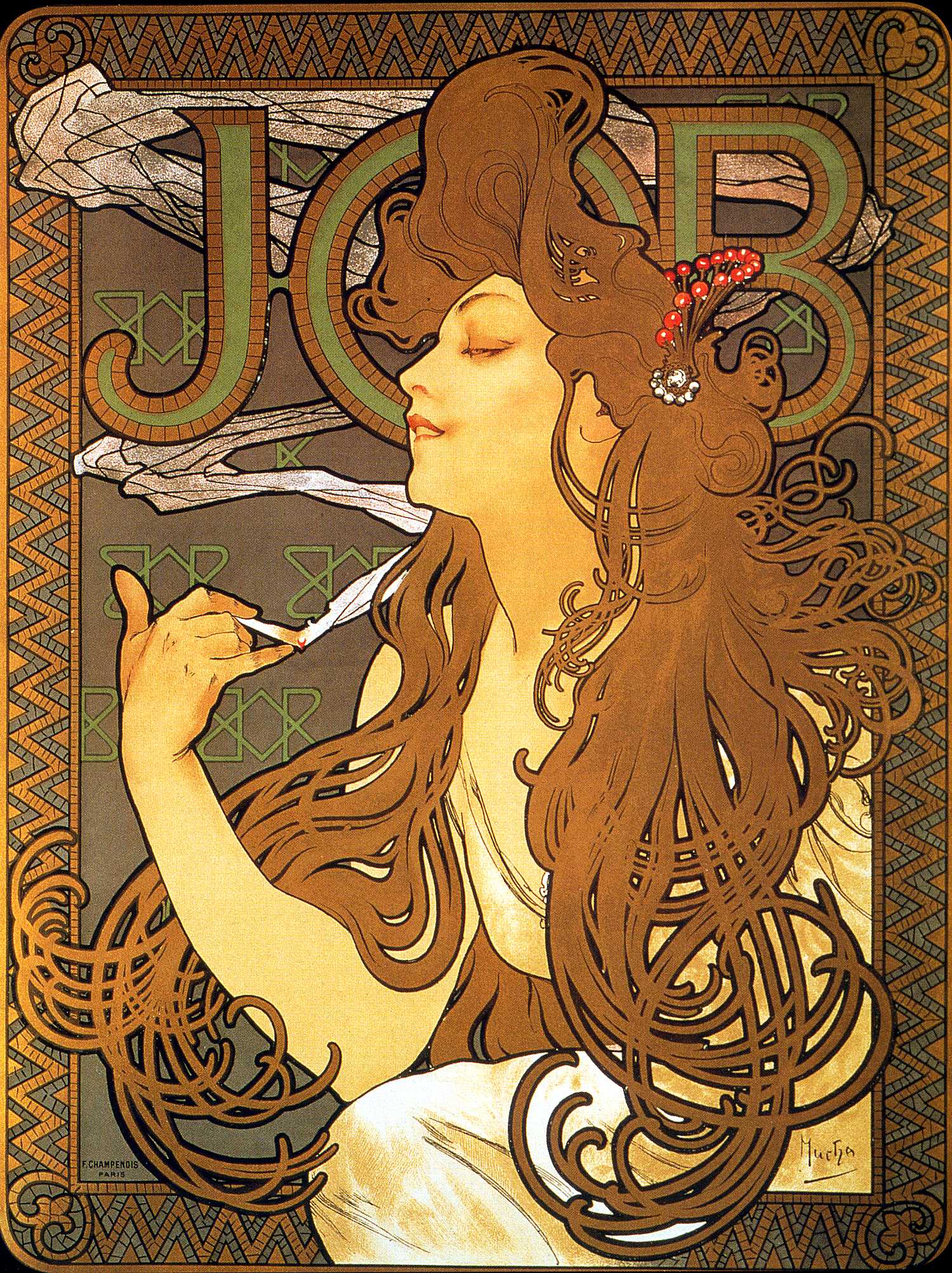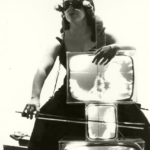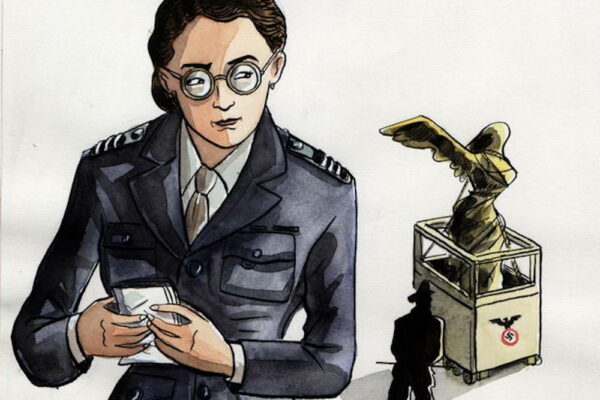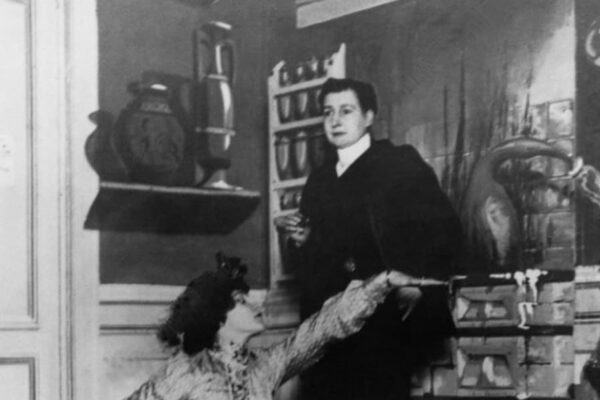During the late winter of 1894, a struggling Czech artist was working in an illustrator workshop, correcting proofs for a friend. It was the holidays in Paris and most other artists were out of town. All of a sudden, a woman rushes into the workshop demanding a poster for a theatre production called Gismonda. The production is set to open in less than two weeks and someone needs to work on the poster at once! With all other artists out of commission for the holiday season, the Czech artist takes up the opportunity, despite his lack of experience in the field of poster art.
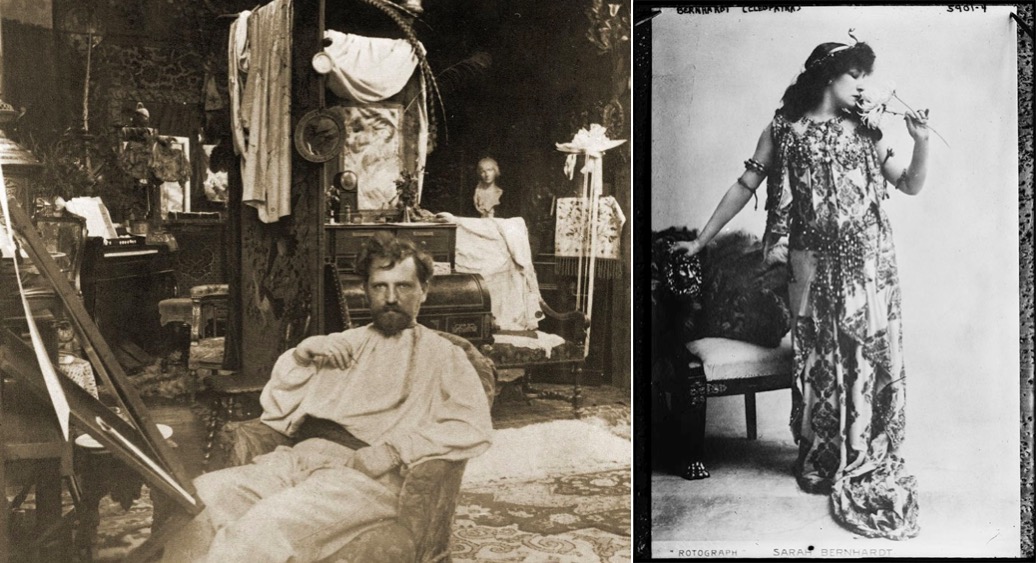
This chance encounter began the relationship between Alphonse Mucha, the King of Art Nouveau and the greatest actress of her time, Sarah Bernhardt. The art world would never be quite the same after the meeting of these two artists…
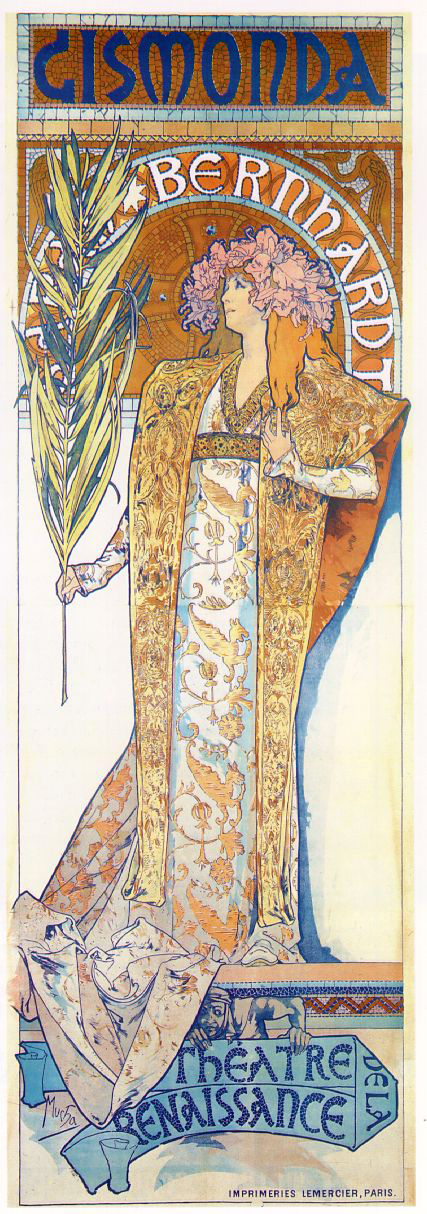
Poster for Gismonda (1894) © Mucha Foundation
The poster Alphonse Mucha designed for Sarah would not only launch his career as a world-renowned artist, but would also popularize an upcoming art movement known as Art Nouveau (new art). Mucha’s poster for Gismonda mimicked the Byzantine mosaic artwork style and included curvaceous flourishes that put emphasis on the female form. The poster depicted the the middle-aged Sarah Bernhardt as a youthful maiden of spring, giving life to Sarah as herself and as the character she was to portray. Sarah Bernhardt, of course, fell in love with Mucha’s work at once.
Sarah Bernhardt as Cleopatra (1891) © Harvard Collection
Sarah Bernhardt offered Alphonse Mucha a six-year contract to create costumes, backgrounds, props, and posters for her productions at the Théâtre de la Renaissance, a theater that she owned, operated and performed in.
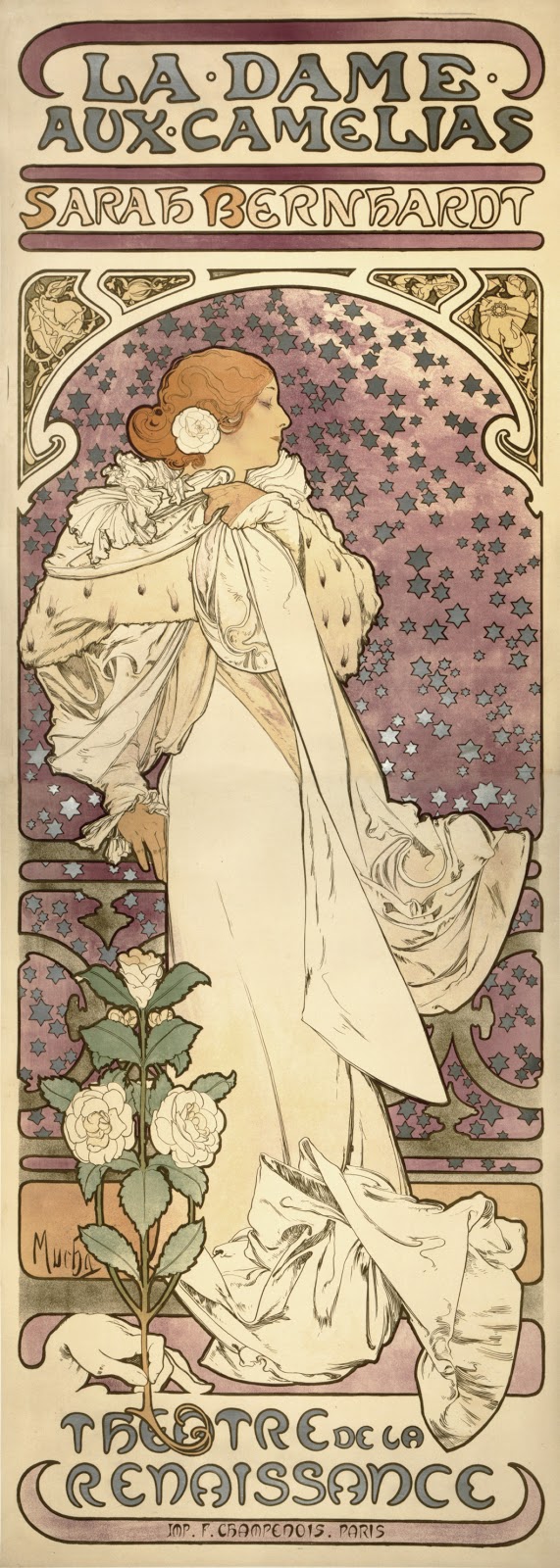
Mucha’s collaboration with Sarah allowed him to come into his own as an artist and further develop the art style that he became best known for. Sarah Bernhardt became an icon of the Art Nouveau movement, continuing her status as one of the most celebrated women in the world.
The Art Nouveau posters were not just a hit with Sarah Bernhardt, but the public adored them as well. Rumor has it that the people of Paris would use razors to cut the posters off of hoardings or would bribe bill stickers, so they could take a piece of Mucha home with them.
Regardless of the role Sarah played in her productions, Mucha made sure to highlight Sarah’s beauty and grace. Mucha also designed jewellery for Sarah to wear during her productions. His most iconic pieces for her was the opal snake bracelet that is shown in the poster of Medée and the lily tiara that can be seen on the poster for La Princesse Lointaine.
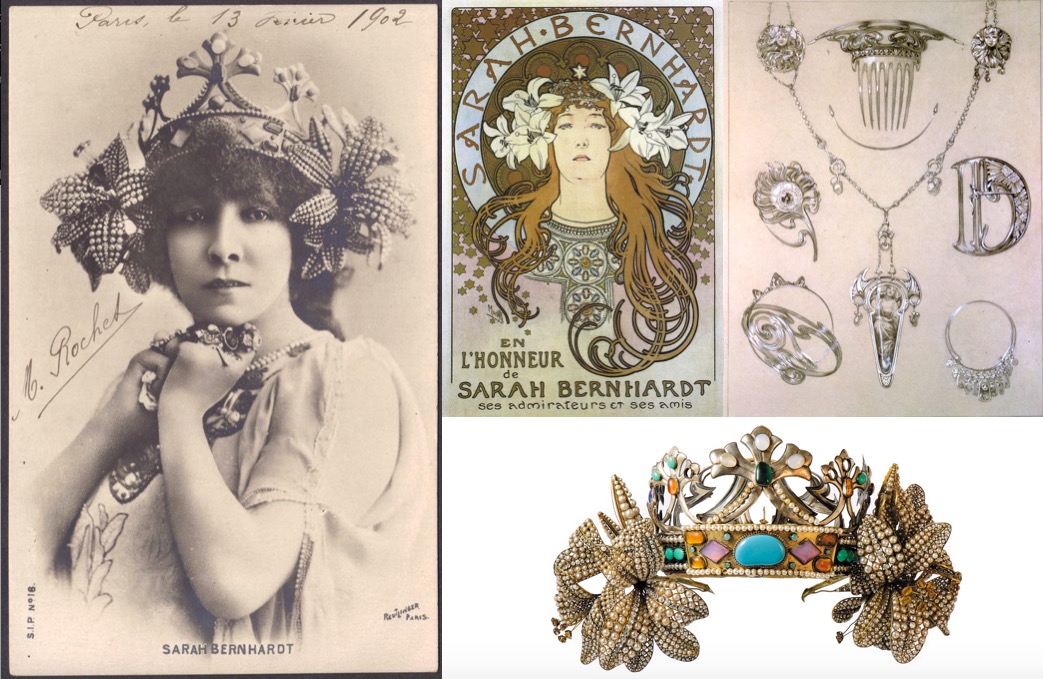
Sarah Bernhardt modelling her Lily tiara (picture bottom right)
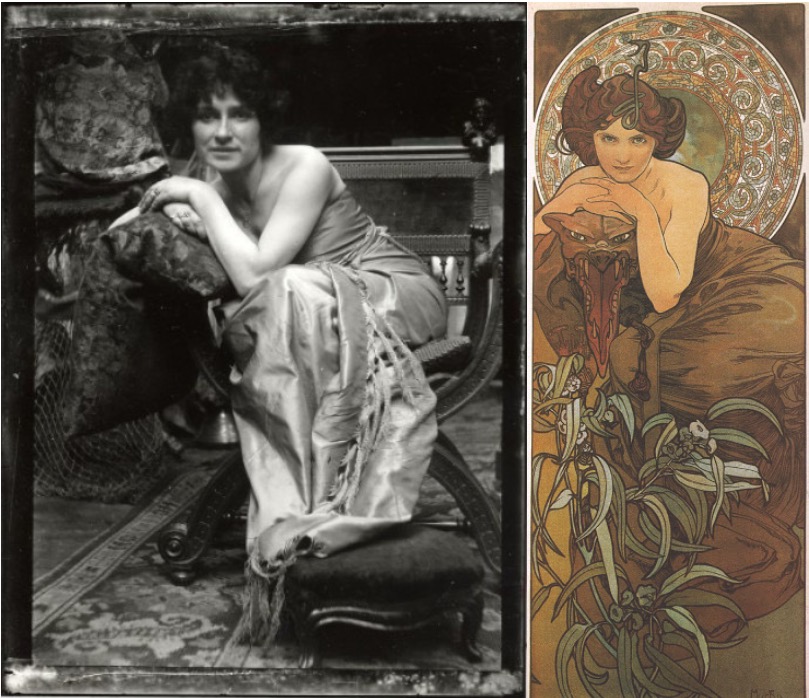
via Poul Webb
The artist’s success with Sarah Bernhardt allowed him to hold solo exhibits all over the world. By 1896 the public could get a hold of Mucha’s art in the form of calendars, postcards, theatre programs and more.
Mucha also began to work with a publishing company called Champenois, which commissioned him to do more work for consumer products such as cigarette paper, biscuits, chocolate, champagnes, and even bicycles.
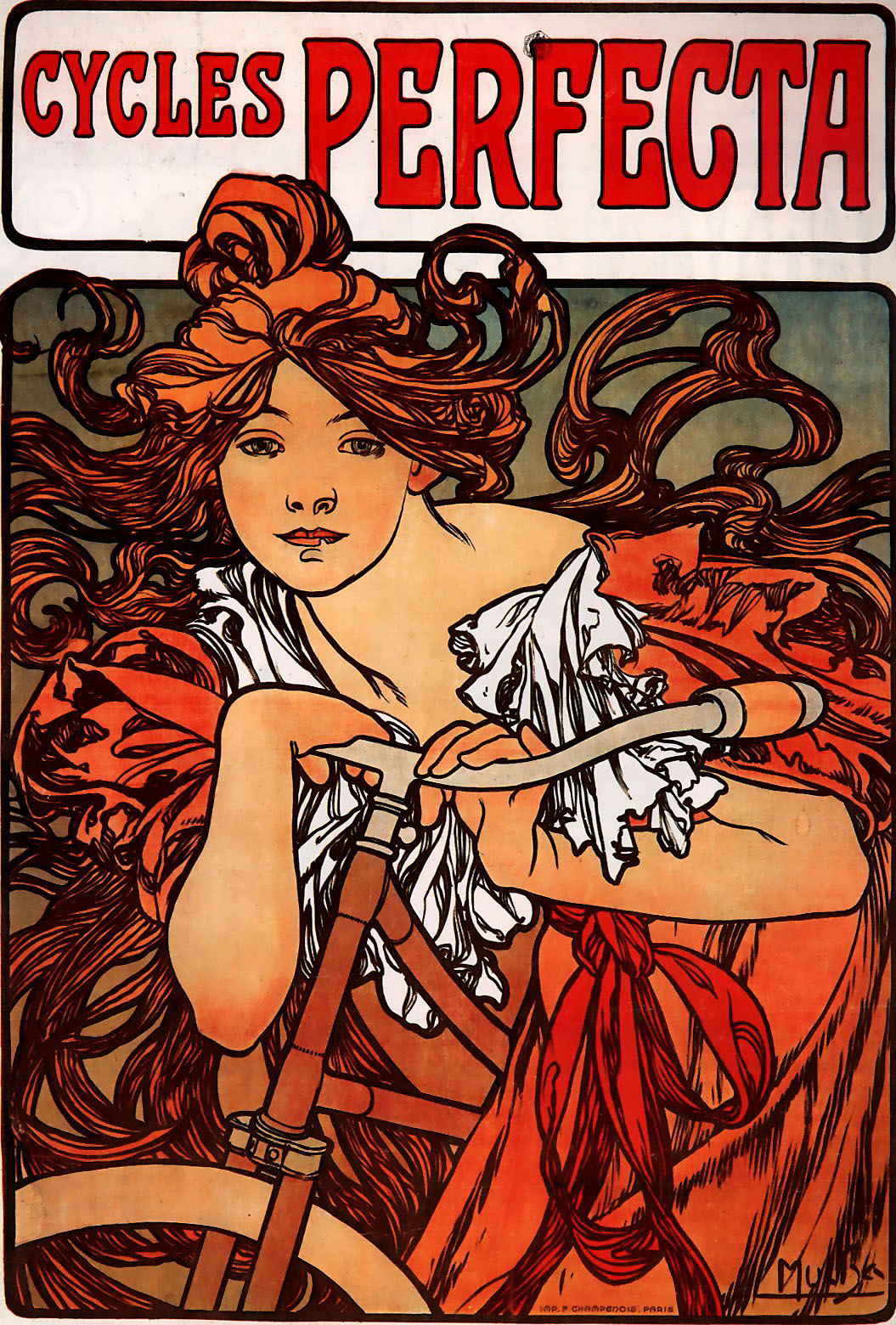
For a time Alphonse Mucha’s art was not fondly remembered due to his style being considered outmoded and old fashioned. Mucha eventually came to be known for his commercial work and how effortlessly he combined the otherworldly with the everyday.
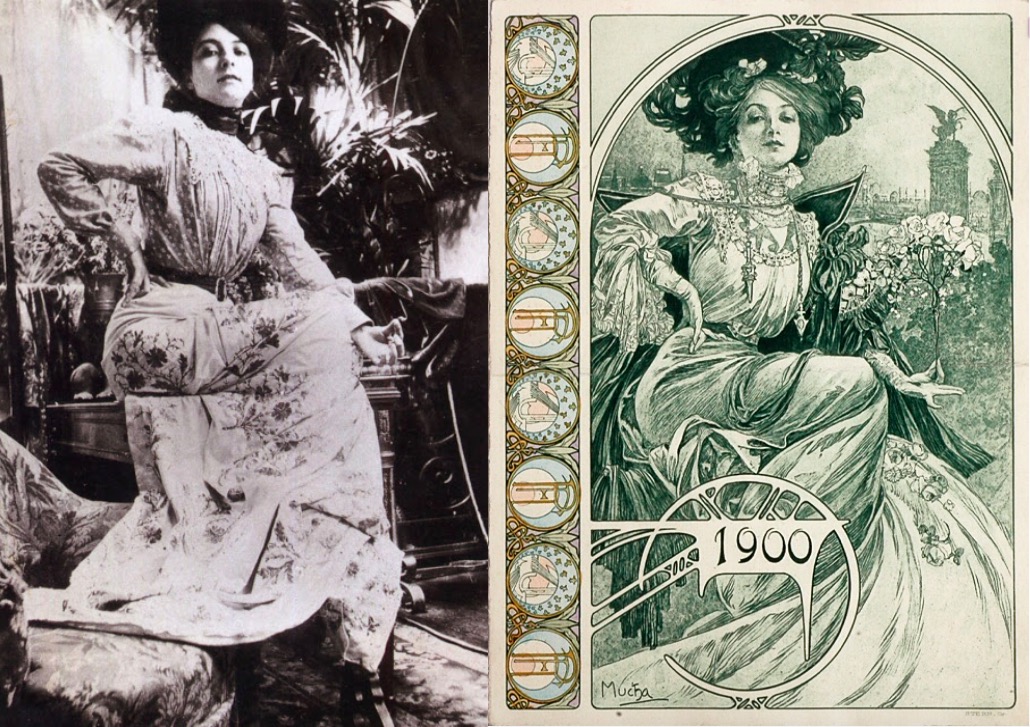
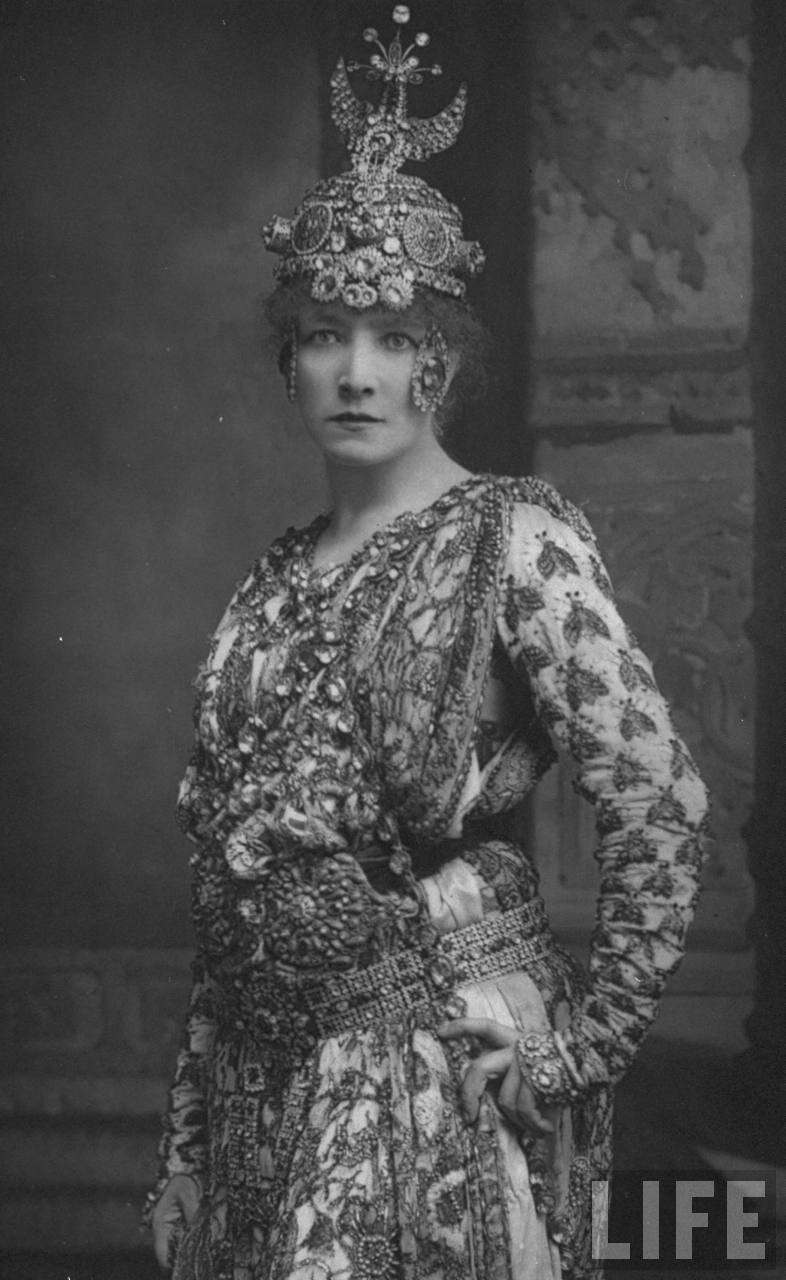
Sarah Bernhardt © Life Archives
Sarah Bernhardt’s name was continuously mentioned decades after her death, but sadly her memory faded in time when the screen began to outshine stage. Much of Mucha’s original work can be found in Prague, the city in which he spent most of his later life. Prague hosts the Mucha Museum and the series of paintings that Mucha considered to be his masterpiece called The Slav Epic. Sarah Bernhardt’s was so intertwined with Mucha’s art that there is even a restaurant in Prague named in her honor.
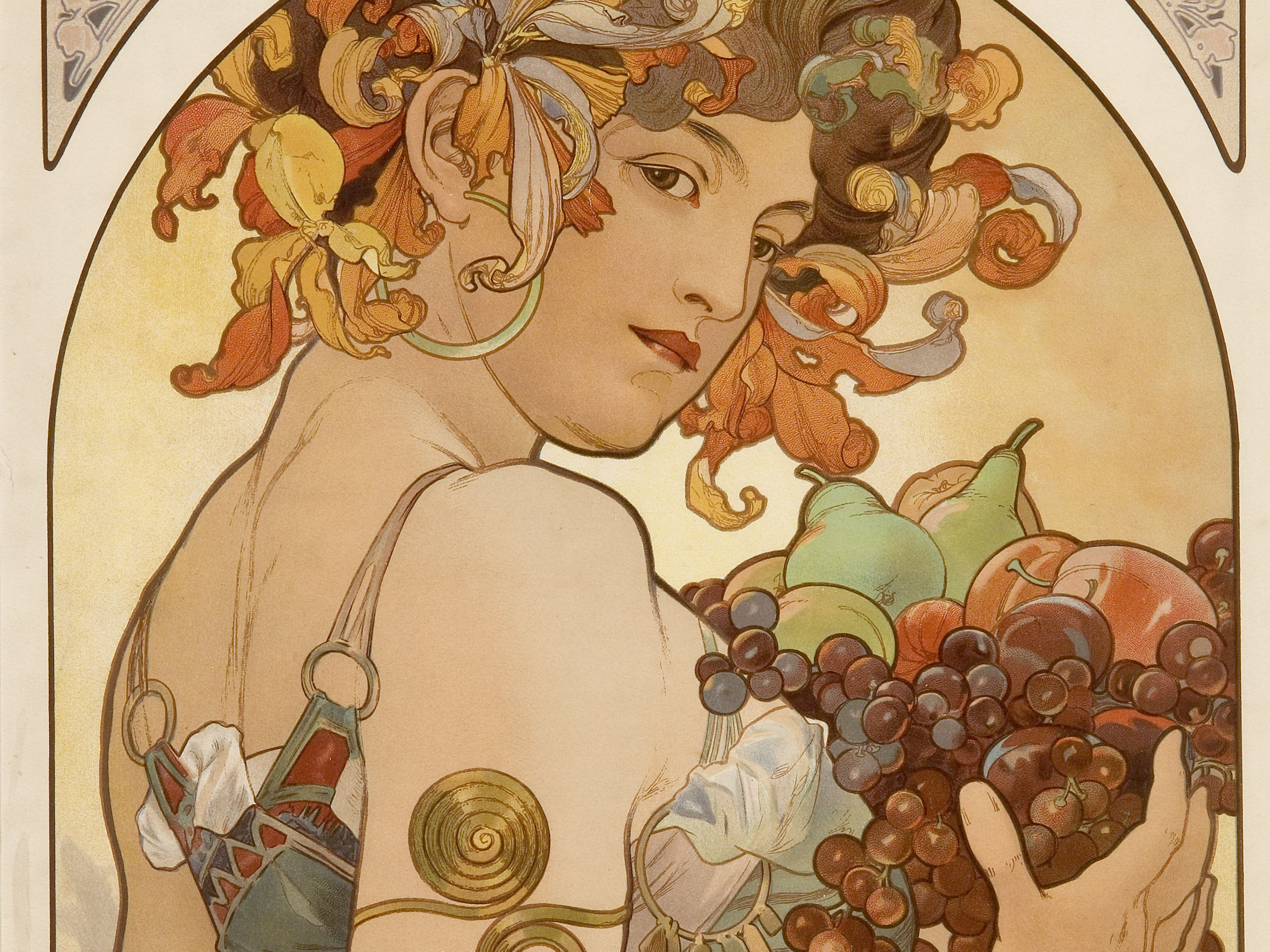
Today, Alphones Mucha’s art is more popular than ever as more and more artists continue to emulate his style. Sarah Bernhardt is long gone and no living person today can recount what it was like to see the actress live on stage, but we do get a sense how great she was through the collaborative works she did with Mucha.


